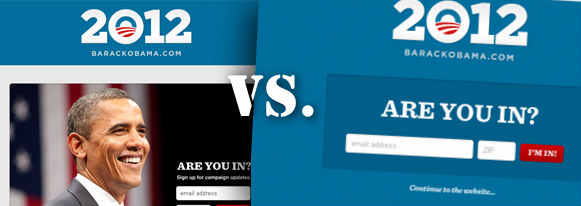Your gut instincts as a marketer are probably wrong

Time’s writeup of the Obama campaign’s online and data efforts, linked earlier, is fascinating reading.
Constant optimization with A/B testing played a big role in the campaign’s fundraising efforts (emphasis added):
A large portion of the cash raised online came through an intricate, metric-driven e-mail campaign in which dozens of fundraising appeals went out each day. Here again, data collection and analysis were paramount. Many of the e-mails sent to supporters were just tests, with different subject lines, senders and messages. Inside the campaign, there were office pools on which combination would raise the most money, and often the pools got it wrong. Michelle Obama’s e-mails performed best in the spring, and at times, campaign boss Messina performed better than Vice President Joe Biden. In many cases, the top performers raised 10 times as much money for the campaign as the underperformers.
Chicago discovered that people who signed up for the campaign’s Quick Donate program, which allowed repeat giving online or via text message without having to re-enter credit-card information, gave about four times as much as other donors. So the program was expanded and incentivized. By the end of October, Quick Donate had become a big part of the campaign’s messaging to supporters, and first-time donors were offered a free bumper sticker to sign up.
The Obama campaign succeeded online in part because it didn’t know what worked–and admitted it. That’s the hallmark of a good marketer: humility about your skills, a willingness to constantly check your core assumptions.
To succeed as a marketer, you have to take risks and put your ego on the line. As Pixar president Ed Catmull reminds us, “if we aren’t always at least a little scared, we’re not doing our job.”